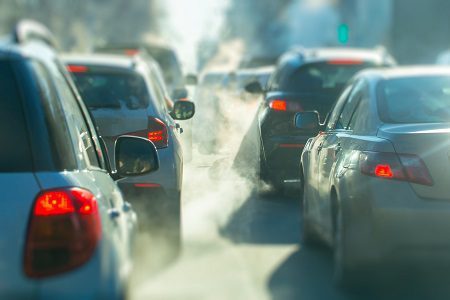Uri Guterman, Head of Products and Marketing, Hanwha Techwin Europe discusses the use of video solutions to cut carbon emissions.
We are at an inflexion point in the battle against climate change. Scientists have long been sounding the alarm about the damage carbon emissions are doing to our planet but now they are beginning to observe widespread, unprecedented changes across the whole climate system. Some of these are irreversible over hundreds, to thousands, of years.
Limiting climate change
The good news is that we still have the opportunity to limit climate change. The Intergovernmental Panel on Climate Change (IPCC), a UN body that assesses the science of climate change, states that “…strong and sustained reductions in emissions of carbon dioxide (CO2) and other greenhouse gases would limit climate change.”
Beyond tackling climate change, limiting carbon emissions will also improve many people’s quality of life by improving air quality in their towns and cities. Air pollution is one of the greatest environmental risks to health and cutting emissions reduces the onset and mortality from stroke, heart disease, lung cancer, and respiratory diseases like asthma.
Video analytics to support climate change efforts
To support wider carbon emission cutting, city and business leaders can invest in intelligent, video-based solutions that minimise congestion and make moving around a city, car park, and site, simpler. Simultaneously, the video analytics technology employed to do this can additionally support toll-road and parking pricing or rule enforcement, improve security, and boost the driver experience.
The role of AI Intelligent cameras, such as the Wisenet AI cameras, come equipped with edge-based artificial intelligence (AI) that can detect and classify different vehicle categories and models. Bicycles can be differentiated from cars and trucks, for example, enabling operators to allow certain vehicular traffic through an area and limit others. So, trucks could be restricted from entering residential streets or any vehicle from roads near schools during drop-off and pick-up times. This will keep traffic on the move and protect vulnerable residents and children from exhaust fumes.
Likewise, operators can monitor road usage and redirect traffic to alternative routes if congestion is building up. AI can alert operators to potential traffic jams or road accidents, enabling them to take proactive action to avoid worsening congestion. Simultaneously, updates and closures can be communicated to drivers through integrated digital displays placed along a route.
Parking solutions
When a vehicle reaches its destination, again, video analytics technology can ensure a smoother driving and parking experience — and by extension, lower emissions. Automatic Number Plate Recognition (ANPR) fulfils multiple roles here, by automatically allowing access to a car park for pre-authorised vehicles to enforcing parking penalties, and monitoring a site for dangerous driving. Reducing the time taken to wait for a barrier to raise or a ticket to be issued will ultimately add up across hundreds of vehicles entering and exiting a site. Meanwhile, bad parking that hinders other vehicles and causes congestion can be avoided. ANPR can also help traffic flow more smoothly through other stop-and-go installations like toll roads.
Media contact
Rebecca Morpeth Spayne,
Editor, Security Portfolio
Tel: +44 (0) 1622 823 922
Email: editor@securitybuyer.com













